Ever felt like your bedroom could be more than just a place to sleep? You’re right—it should be your personal haven!
But often, little layout mishaps can disrupt the vibe. But no worries!
In this guide, we’re diving into the 11 most common bedroom layout mistakes, how to avoid them, and what to do instead.
Get ready to transform your bedroom into a cozy, stylish and perfectly flowing haven where you’ll catch a good night’s sleep every time.
1. Ignoring the Welcome View
Walking into your bedroom should feel like a breath of fresh air. A common mistake is not planning what you see first.
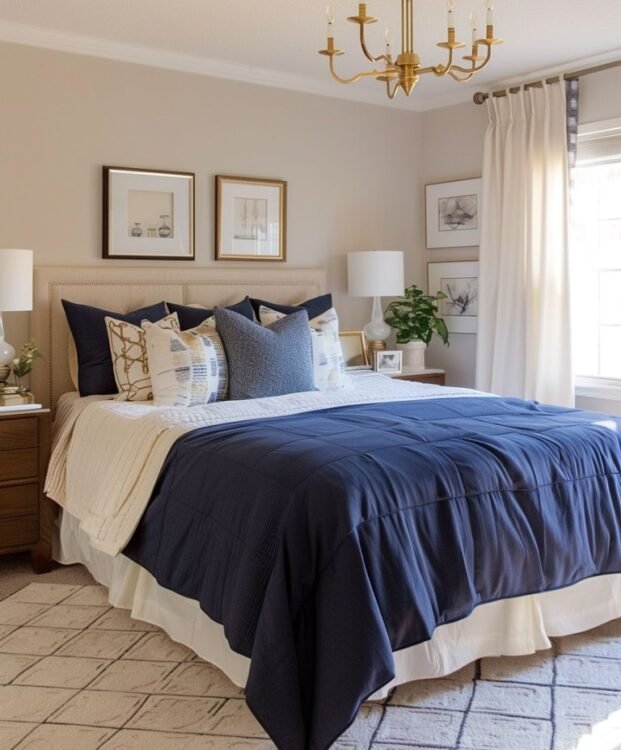
Ideally, a welcoming piece like a stylish chair or the beautifully made bed should greet you. This view sets a serene tone, so avoid walking into the side of a dresser or bed.
Aim for symmetry and balance right from the doorway to foster an immediate sense of peace.
2. Lighting Without Layers
Bedroom lighting needs variety. It’s essential for different times and tasks—think reading, relaxing, or dressing.
Placement matters; for instance, reading lamps should be at an eye-level height when sitting up in bed. Incorporate a mix of overhead lights, task lamps, and ambient fixtures.
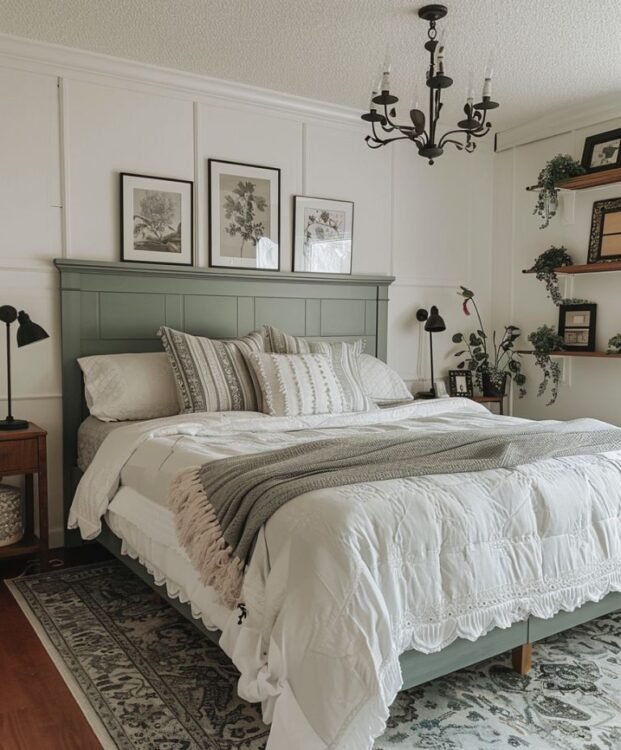
And don’t overlook the power of blackout curtains to block unwanted light, ensuring your circadian rhythm isn’t thrown off.
3. Underfurnishing in Large Rooms
In a big bedroom, less isn’t always more. Under-furnishing can leave your space feeling cold and disconnected.
Introduce larger furniture pieces or distinct areas like a reading nook or an office corner. Use rugs to define these areas, making the room feel cozy and cohesive.
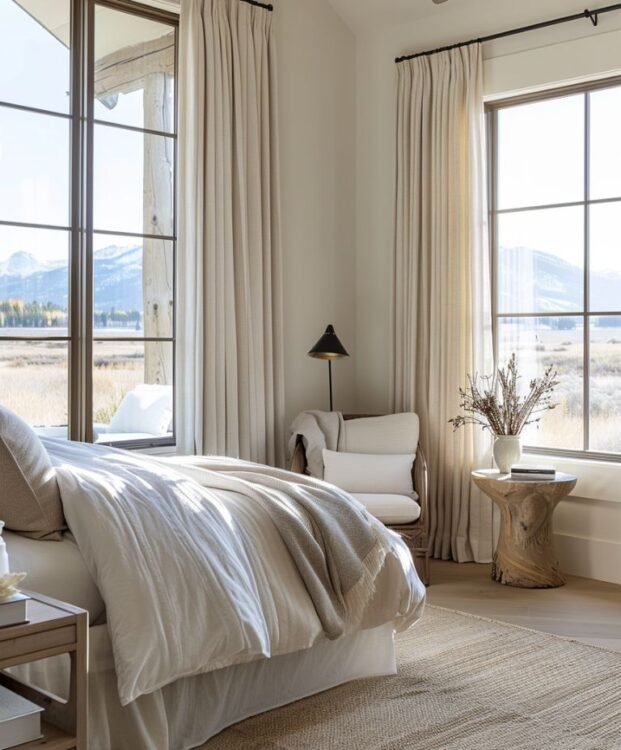
Large elements like four-poster beds can also fill the vertical space beautifully, adding grandeur and focus.
4. Furniture Flush Against Walls
Resist the urge to line up all your furniture against the walls. This might seem like a space-saving trick, but it can actually make the room feel smaller and uninviting.
Try ‘floating’ some pieces, like the bed or a dresser, away from the walls.
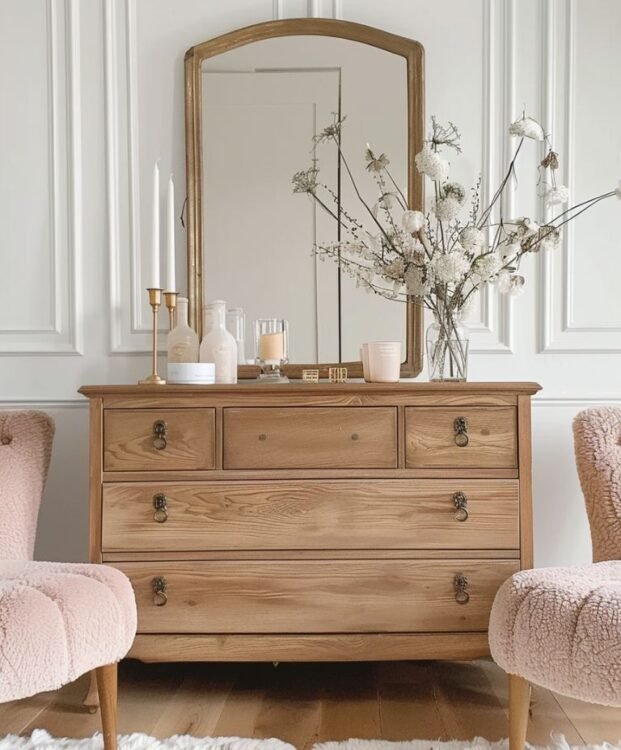
This arrangement creates a more dynamic, breathable space and adds an interesting visual flow.
5. Bed Placement Near the Door
The location of your bed can dramatically affect the room’s feel. Placing it too close to the door can make your space feel less private and peaceful.
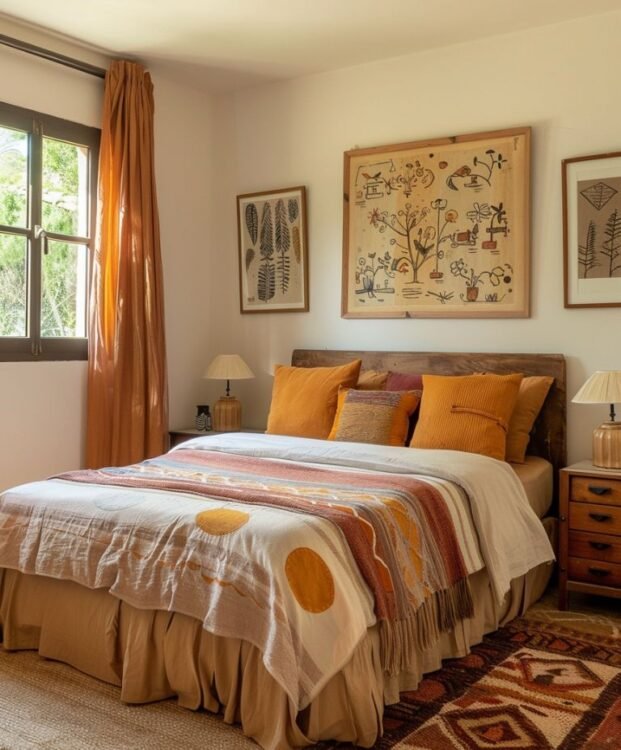
Instead, position your bed further inside the room to create a buffer from the hustle and bustle. This placement enhances the bedroom’s feel as a secluded retreat.
6. Omitting a Rug
Skipping a rug can make your bedroom feel bare and unwelcoming. Rugs add warmth, texture, and color, grounding your space aesthetically.
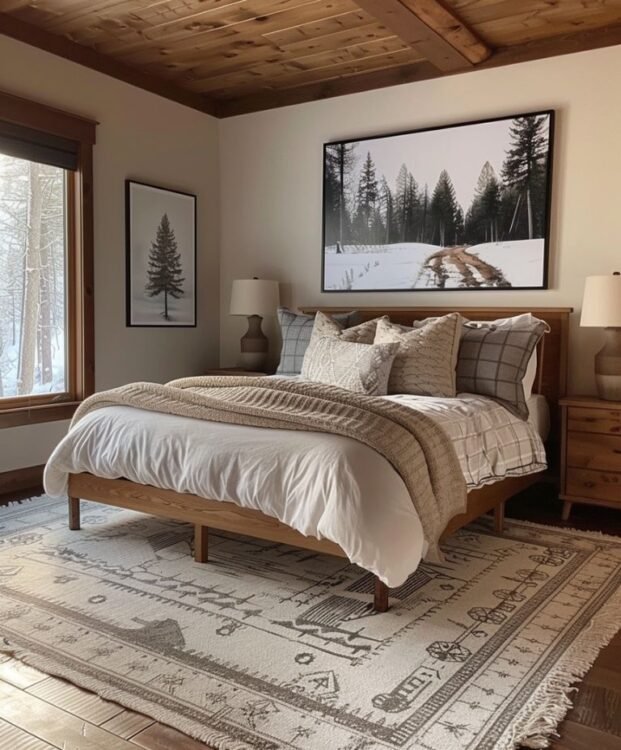
They also help define areas within your bedroom, like a seating or dressing area, making the overall space feel more organized and intentional.
7. Misguided Storage Choices
Choosing the wrong storage options, like open shelving, can make your bedroom feel cluttered and chaotic.
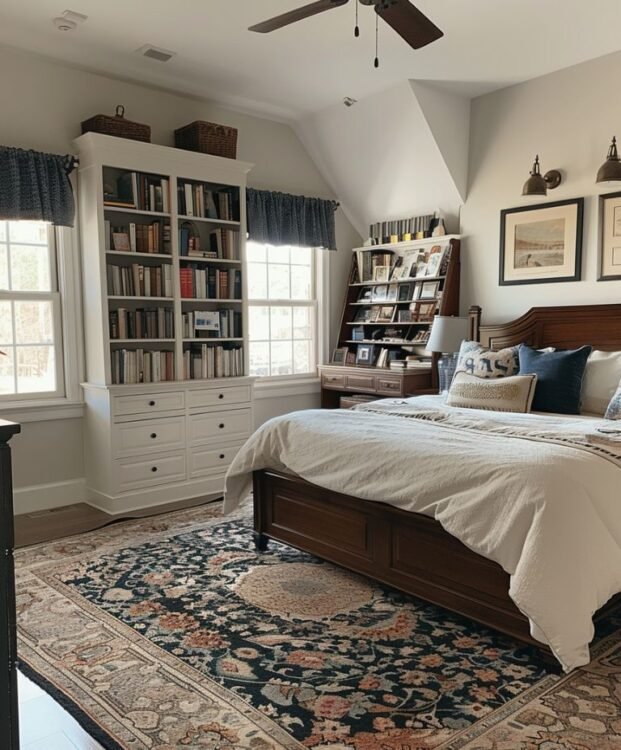
Opt for closed storage to keep personal items out of sight and mind, creating a calmer, more serene environment.
Remember, a clutter-free space promotes better sleep and relaxation.
8. Crowding the Bed
Avoid packing too many furniture pieces around your bed. This can make the space feel cramped and cluttered.
If room allows, choose larger bedside tables and ensure there’s space around them to move freely.

If not, consider simpler alternatives like wall-mounted shelves to keep the area open and airy.
9. Ignoring Corners
Don’t neglect the potential of corners in small bedrooms. Instead of centering the bed, placing it in a corner can free up valuable floor space for other furniture.
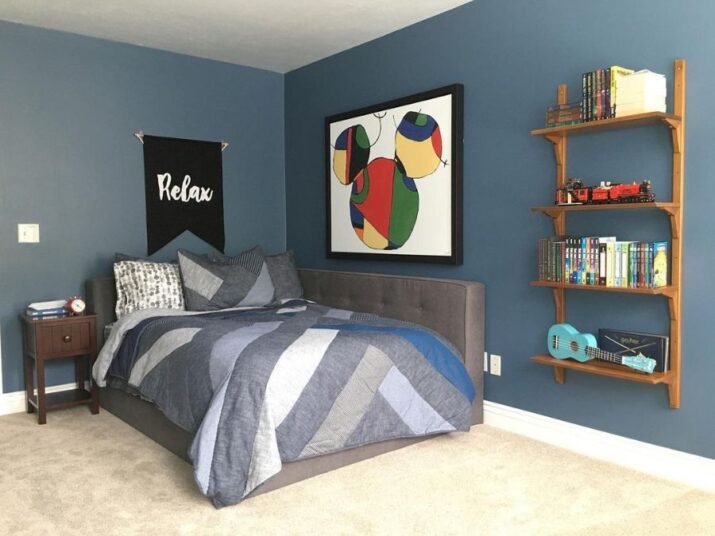
This layout can also expand the room visually, making it feel larger and more functional.
10. Excessive Minimalism
Stripping down your bedroom too much can leave it feeling cold and impersonal.

Incorporate elements that reflect your style, such as unique furniture pieces, colorful textiles, and even plants like a peace lily or monstera, which enhance air quality and add life to your decor.
11. Overlooking Bed Size
A large bed can be luxurious but overpowering in a small space. Ensure there’s enough room for essential furniture like bedside tables and lamps.

Consider your room’s proportions when choosing your bed size to maintain balance and functionality.
By sidestepping these common pitfalls, you can create a bedroom that’s not only stylish but also a joy to retreat to every night. Here’s to better sleep and even better mornings!

